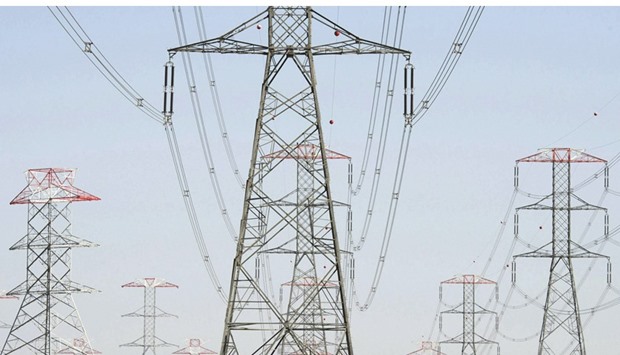The Middle East will require additional power capacity of 267 gigawatts (GW) by 2030, Siemens has said in its outlook for the energy landscape in the region and noted that natural gas will become its top source for power generation.
This will take the region’s capacity to 509GW, from 307GW now, resulting in an increase of 66%. The next 15 years will also see 66GW of capacity retired.
In its outlook, Siemens maps out the region’s current power generation scenario, upcoming challenges, allocation of energy sources and the role digitalisation will play in the future energy mix. Siemens found today’s power generation challenges to be affordability, sustainability, efficiency and energy security.
To overcome these, power generation needs to allow for fuel diversity, and to become more affordable, reliable, highly efficient with lower emissions, and flexible enough to complement renewables.
By 2030, highly efficient combined-cycle power plants (CCPPs) will dominate the market, as their share of thermal power generation reaches 65%. This trend will be underpinned by the growing importance of natural gas as the top source of fuel for power generation. Demand for gas is expected to grow by 4.3% annually until 2030.
CCPPs can increase fuel efficiency in power plants by around 50%. Besides building new power plants, the region has a 45GW potential for efficiency improvements by upgrading facilities, which are older than 30 years.
“The Middle East’s growing population increasingly requires reliable and efficient power supply. While the share of renewables in the region’s energy mix is set to increase, we also see natural gas as the main source of power generation by 2030, with energy efficient combined-cycle power plants leading in new capacity additions,” said Dietmar Siersdorfer, CEO of Siemens Middle East and UAE.
“We also see digitalisation as an essential part of the future energy landscape, harnessing value out of data, improving productivity and creating new business opportunities.”
By 2020, the amount of data globally is expected to reach 44 zettabytes — equivalent to 5mn laptops worth of data added every day — representing a ten-fold increase from 2013, according to the International Data Corporation. As the number of devices in power grids grows, complexity and data increase. This requires better interconnectivity and flexibility to integrate new technologies and secure assets from cyber-attacks. Companies can use digitalisation to protect valuable assets, reduce cost, improve optimisation and flexibility, and boost operational efficiency.
The Middle East will also see a growing mix between centralised and distributed power systems, while energy storage will gain importance as the share of renewables — solar and wind — increases and requires better integration into the grid. The growing role of renewables in the Middle East is in line with regional countries’ emissions reduction targets and climate change action plans. Power generation from solar is gaining momentum, with around 16GW of capacity additions expected by 2030.
In the United Arab Emirates, holder of about 6% of global oil reserves, the growth in power demand is among the highest in the region. By 2030, the country’s installed power generation capacity is expected to reach 60GW, comprising of 44GW from CCPPs, and the remaining 20GW from simple-cycle power plants, renewables, nuclear and other.
Siemens has been a long-term technology partner to the region. In Qatar, Siemens’ solutions are responsible for transmitting and distributing more than 60% of power generated in the country.
In the UAE, Siemens turbines account for 40% of the country’s power generation capacity.
Business / Eco./Bus. News
Mideast to require additional 267GW power generation capacity by 2030: Siemens

Camels graze around power grid towers in the Kuwaiti desert. In its outlook, Siemens maps out the region’s current power generation scenario, upcoming challenges, allocation of energy sources and the role digitalisation will play in the future energy mix.


